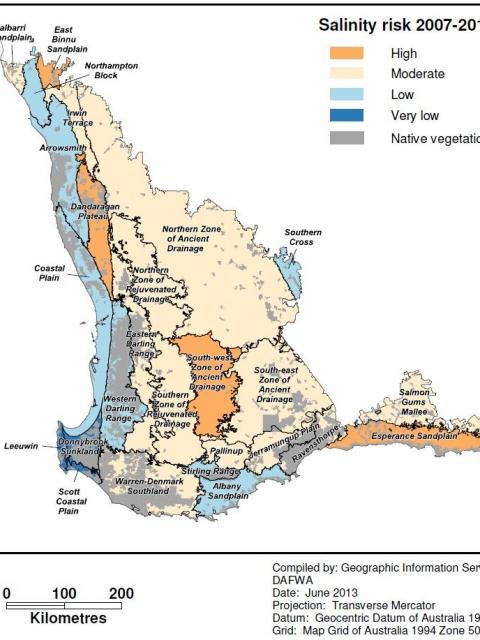Salinity affects carbon farming
Under the Emissions Reduction Fund, proponents need to consider regional natural resource management (NRM) plans to ensure that tree plantings for carbon bio-sequestration maximise environmental benefits and avoid unintended adverse effects on biodiversity, water and agricultural production systems. Regional NRM organisations therefore have a role to play in assessing carbon bio-sequestration tree plantings.
The Carbon Credits Regulations stipulate that in areas receiving more than 600 millimetres average annual rainfall, a plantation must help to mitigate dryland salinity to qualify as a carbon offset project. The salinity guidelines outline how a proponent may demonstrate that a plantation in a particular location will contribute to mitigating dryland salinity. In Western Australia, the prescribed method most likely to be applicable requires reference to an approved salinity risk map. The department published a salinity risk map for the south-west agricultural region in the Report card on sustainable natural resource use in agriculture. The map is the basis for a decision support process for assessing tree planting proposals under the Carbon Farming Initiative.

For more information
Resource management technical report 390, Salinity risk mapping for assessing Carbon Farming Initiative proposals: decision support and data requirements, outlines a process that a regional NRM organisation in Western Australia can apply to a carbon bio-sequestration tree planting proposal that is compliant with the guidelines. The process also aims to protect water resources, taking into consideration the water resources legislation currently operating in this state.


